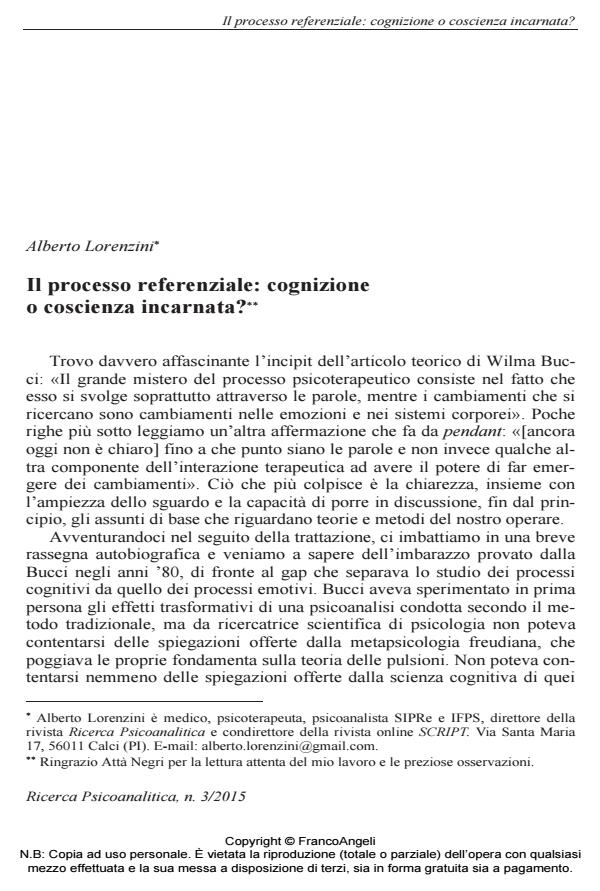The referential process: cognition or embodied consciousness?
Journal title RICERCA PSICOANALITICA
Author/s Alberto Lorenzini
Publishing Year 2015 Issue 2015/3
Language Italian Pages 18 P. 67-84 File size 100 KB
DOI 10.3280/RPR2015-003006
DOI is like a bar code for intellectual property: to have more infomation
click here
Below, you can see the article first page
If you want to buy this article in PDF format, you can do it, following the instructions to buy download credits

FrancoAngeli is member of Publishers International Linking Association, Inc (PILA), a not-for-profit association which run the CrossRef service enabling links to and from online scholarly content.
The author expresses his appreciation for Bucci’s work and focuses his reflection on a key aspect of the referential process: the passage from the sub-symbolic to the non verbal symbolic. In the author’s opinion this passage coincides with the birth of consciousness starting from the substrate of the relational dance. This article tries to provide a concrete, or better embodied, basis to consciousness and its emergence, differentiating it from the generic mental activity that we call cognition. In the emergence of consciousness from play we can locate the deep meaning of the non verbal interactions in psychotherapy as well as the construction of the psychological organism. At the end of a complex path that includes Edelman’s primary consciousness and the study of Lakoff and Johnson’s primary metaphors, the author returns to Bucci and acknowledges his basic agreement with her.
Keywords: Edelman, primary consciousness, primary metaphors, enactment, relational dance, constructivism
- Coscienza primaria e coscienza di ordine superiore in homo sapiens: continuità ed emergenze Tiziano Carbone, in RICERCA PSICOANALITICA 1/2017 pp.49
DOI: 10.3280/RPR2017-001005
Alberto Lorenzini, Il processo referenziale: cognizione o coscienza incarnata? in "RICERCA PSICOANALITICA" 3/2015, pp 67-84, DOI: 10.3280/RPR2015-003006